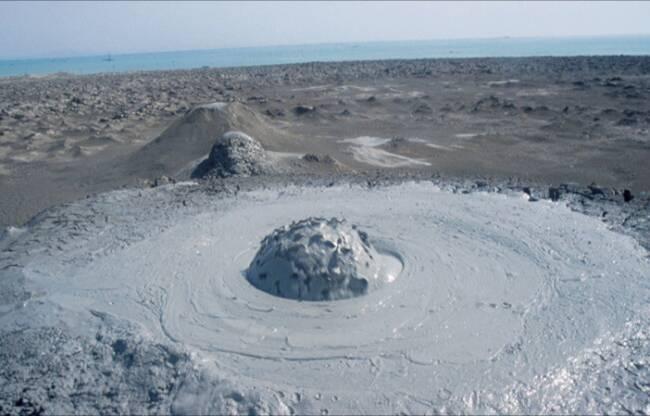



A mud volcano may be the result of a piercement structure created by a pressurized mud diapir which breaches the Earth's surface or ocean bottom.In 2001, one mud volcano 15 kilometers from Baku made world headlines when it suddenly started spewing flames 15 m high. Seeps have temperatures up to 2–3 °C above the ambient temperature. In Azerbaijan, eruptions are driven from a deep mud reservoir which is connected to the surface even during dormant periods, when seeping water still shows a deep origin. It is estimated that 300 of the planet's estimated 700 mud volcanoes are found in Gobustan, Azerbaijan and the Caspian Sea. The term mud volcano or mud dome is used to refer to formations created by geo-excreted liquids and gases, although there are several different processes which may cause such activity.
They are also often associated with lava volcanoes; in the case of such close proximity, mud volcanoes emit incombustible gases including helium, whereas lone mud volcanoes are more likely to emit methane. They are also often associated with petroleum deposits and tectonic subduction zones and orogenic belts; hydrocarbon gases are often erupted. Mud volcanoes are often associated with petroleum deposits and tectonic subduction zones and orogenic belts; hydrocarbon gases are often erupted.
They are also often associated with lava volcanoes; in the case of such close proximity, mud volcanoes emit incombustible gases including helium, whereas lone mud volcanoes are more likely to emit methane. They are also often associated with petroleum deposits and tectonic subduction zones and orogenic belts; hydrocarbon gases are often erupted. Mud volcanoes are often associated with petroleum deposits and tectonic subduction zones and orogenic belts; hydrocarbon gases are often erupted.



No comments:
Post a Comment